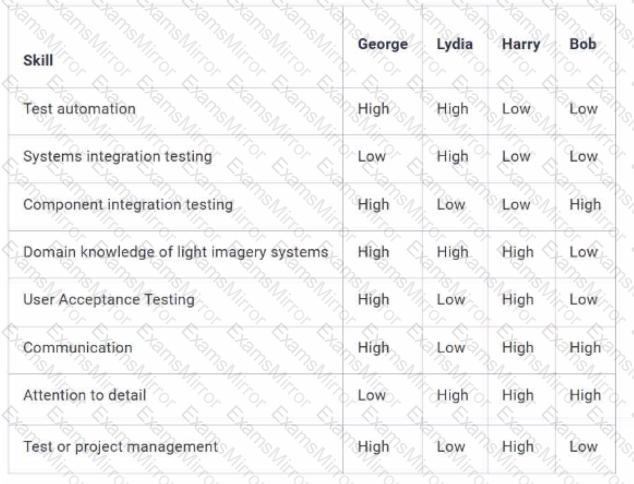New Year Special Limited Time 70% Discount Offer - Ends in 0d 00h 00m 00s - Coupon code = getmirror
Pass the ISTQB Test Manager Advanced CTAL-TM Questions and answers with ExamsMirror
Exam CTAL-TM Premium Access
View all detail and faqs for the CTAL-TM exam
553 Students Passed
89% Average Score
92% Same Questions
The teams are two days away from the end of the current iteration. The rate at which users have been reporting defects has been trending upward in the last few weeks and so far during this latest iteration has shown another increase.
The scrum master of the team responsible for most defects has asked you for ideas about how to perform the next retrospective in order to learn the appropriate lessons.
You have suggested that they should provide the retrospective meeting with a breakdown, by nature and severity, of the defects relevant to that team.
Assuming that this is done, which next three steps of the retrospective will be MOST effective?
Risks have been identified for a project and they have been analysed using a quantitative method, with the following results for probability and impact.

Which risk should the System Testing focus on mitigating first?
SELECT ONE OPTION
Which TWO of the following statements are TRUE about a model-based improvement approach?
Mary is an external IT auditor. She is conducting a review of the system-level testing done by Greg's functional testing team.
Which of the following items from Mary's assessment summary should concern Greg the most? [2]
Refer to SCENARIO 2 - You have been tasked with recruiting testers for Project 3 to help design and run regression tests, you have been provided with a skills matrix for four prospective candidates. The matrix shows the skill level (High or Low) for each candidate:

Which candidate would be the MOST suitable for a test analyst role on Project 3?
SELECT ONE OPTION
Which of the following are Test Closure activities?
a All results lodged in configuration management system - for example test plans, results, logs, reports.
b. Plans in place for lessons to be learnt to ensure that good practices are repeated and poor practices are not.
c. Checks undertaken to ensure that all test work is completed - all tests executed or skipped, all defects managed to appropriate conclusion.
d. All project closure activities completed - for example customer training completed, and analysis of vendor performance undertaken.
e. AM testing work products delivered to those that need them - for example environments/ regression test sets passed to maintenance.
f. Checks undertaken to ensure that all tests have been executed, with all defects confirmed as fixed by retesting.
SELECT ONE OPTION
Which of the following is a typical use of risk analysis? [1]
You are a Test Manager on a new project. The software that is being created will be used to control the projectors in movie theaters. This is a time critical project because the software must be
released before the Christmas holiday season which has the highest movie attendance of the year.
You have decided to implement a review process for the work products that are a part of this release to save both time and money. In order to expedite the training, you brought in a consultant to
train the participants and moderators in proper review processes. Your team is enthusiastic about participating in the reviews.
The project is in the early planning stages. As the review leader, what is an appropriate activity for you to be doing at this point in the project? [3]
Which statement about defining process improvement actions using defect report information is TRUE?
Which of the following statements define a test monitoring activity?
TOP CODES
Top selling exam codes in the certification world, popular, in demand and updated to help you pass on the first try.
